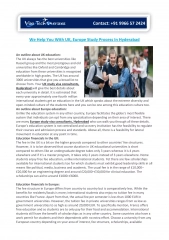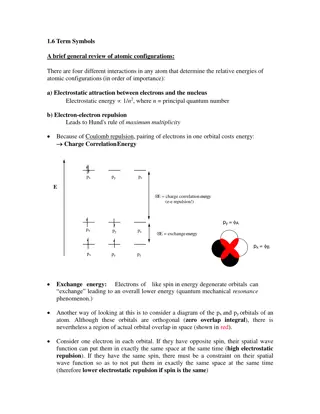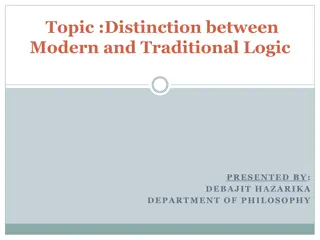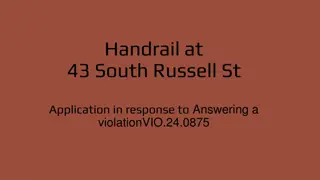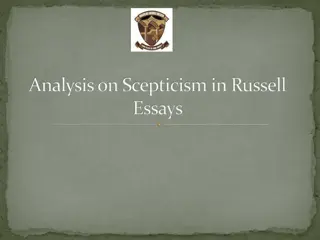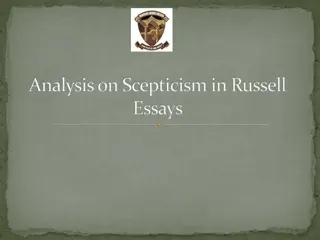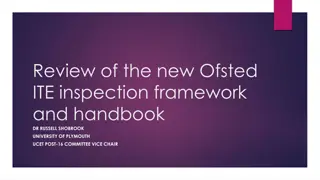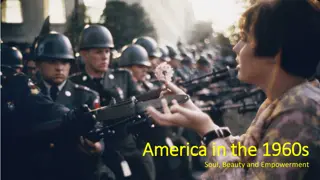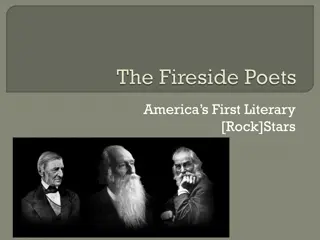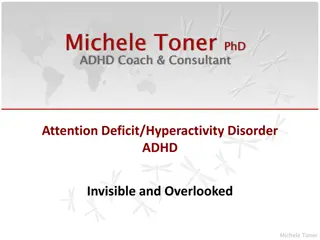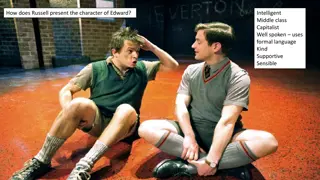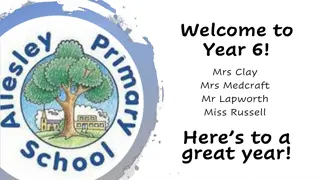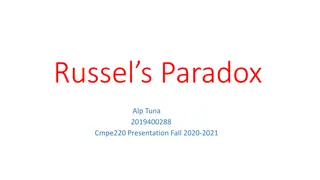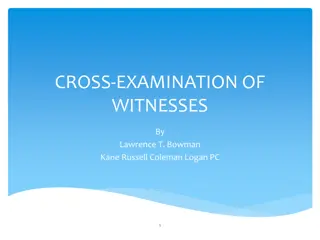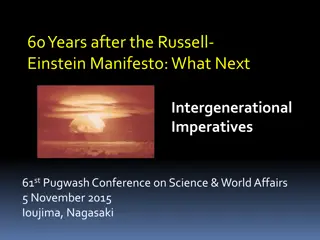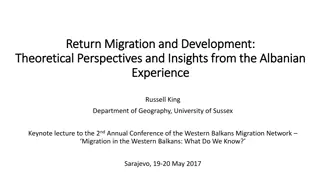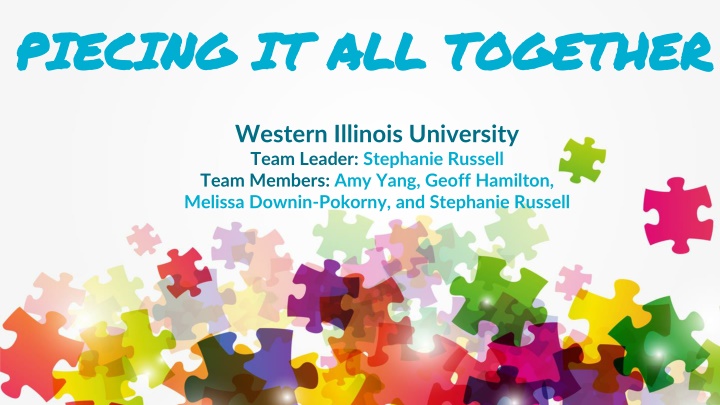
Creating an Autism Support Program at Western Illinois University
Explore the process of establishing an autism support program at Western Illinois University, highlighting the need for intentional programming for students on the autism spectrum. Utilize Kotter's Eight-Stage Change Process, beginning with identifying stakeholders, condensing feedback, and developing learning outcomes. Emphasize the importance of addressing stakeholder needs, limitations, and effective assessment methods to facilitate student growth and institutional integration.
Download Presentation

Please find below an Image/Link to download the presentation.
The content on the website is provided AS IS for your information and personal use only. It may not be sold, licensed, or shared on other websites without obtaining consent from the author. If you encounter any issues during the download, it is possible that the publisher has removed the file from their server.
You are allowed to download the files provided on this website for personal or commercial use, subject to the condition that they are used lawfully. All files are the property of their respective owners.
The content on the website is provided AS IS for your information and personal use only. It may not be sold, licensed, or shared on other websites without obtaining consent from the author.
E N D
Presentation Transcript
PIECING IT ALL TOGETHER PIECING IT ALL TOGETHER Western Illinois University Team Leader: Stephanie Russell Team Members: Amy Yang, Geoff Hamilton, Melissa Downin-Pokorny, and Stephanie Russell
THE NEED THE NEED Significant increase of students on the autism spectrum attending our institution Services for this population have not evolved Exploration of intentional programming to assist in personal, social, and academic integration into the campus community for students on the autism spectrum is needed
Background Background
Utilize John P. Kotters Eight-Stage Change Process (Leading Change, 2012) 1. Establish a sense of urgency 2. Form a powerful guiding coalition HOW TO HOW TO CREATE THE CREATE THE PROGRAM & PROGRAM & IMPLEMENT IMPLEMENT CHANGE CHANGE 3. Create a vision 4. Communicate the vision 5. Empower others to act 6. Generate short-term wins 7. Consolidate improvements 8. Institutionalize changes
HOW TO BEGIN THE CHANGE PROCESS HOW TO BEGIN THE CHANGE PROCESS In order to even begin the eight-stage change process, we need more information: Who are the stakeholders involved? Do we have all of the necessary voices on our current committee? What do our stakeholders need and want out of a program of this type? How can we translate those needs and wants into learning outcomes for the program? How can we ensure that our learning outcomes are leading to student growth and development as well as connect to the institutional mission? What are our limitations? How can we create an environment conducive to fulfilling our learning outcomes? What forms of assessment should we put in place?
1. Identify and contact stakeholders to obtain feedback OUR NEXT OUR NEXT STEPS STEPS 2. Condense stakeholder feedback into overarching themes 3. Generate holistic learning outcomes 4. Member-check learning outcomes with stakeholders to ensure credibility 5. Acknowledge our limitations related to program development 6. Shape the learning environment 7. Develop effective assessment tools
The STAKEHOLDERS The STAKEHOLDERS Students on the spectrum Students not identified as on the spectrum Director of the Disability Resource Center Dean of Students Faculty Applicable Departments [e.g. College of Education] All committee members Other student affairs professionals Counseling Staff Parents/Guardians Community connections directly related to the relevant student population
THE THE What do you think students on the spectrum need or want from a service designed to assist with personal, social, and academic integration into the university community? QUESTION QUESTION
DEVELOPING THEMES DEVELOPING THEMES After collecting data from each stakeholder, we will group responses together that share a similar theme. Below is an example of what a possible theme could look like based on the responses given from the stakeholders. Provide a space for students on the spectrum where students can interact, feel supported, and learn about helpful resources.
GENERATING GENERATING LEARNING LEARNING OUTCOMES OUTCOMES Each learning outcome will be grounded in the themes generated from stakeholder feedback be comprehensive, including a clearly stated audience, behavior, condition, and degree encourage interpersonal, intrapersonal, and cognitive development amongst the participants.
COMPONENTS OF A LEARNING OUTCOME COMPONENTS OF A LEARNING OUTCOME An example of an effective learning outcome based on the mock- responses provided previously is as follows: Audience Who the outcome pertains to Behavior What the outcome expects the audience to do Condition The context in which learning will occur Degree How much the learner will accomplish Students that participate in programming developed for students on the spectrum will identify and describe campus resources that can aid in personal, social, and academic integration into the university community.
THREE THREE DIMENSIONS DIMENSIONS OF OF DEVELOPMENT DEVELOPMENT In the transformative educational paradigm, the purpose of educational involvement is the evolution of multidimensional identity, including but not limited to cognitive, affective, behavioral and spiritual development. Therefore learning, as it has historically been understood, is included in a much larger context that requires consideration of what students know, who they are, what their values and behavior patterns are, and how they see themselves contributing to and participating in the world in which they live (Keeling, 2004, p. 9). Interpersonal How one sees oneself in relation to others Intrapersonal One s internal belief system Cognitive How one makes sense of information
MEMBER MEMBER- -CHECKING CHECKING Communicate with the previously identified stakeholders Provide stakeholders the opportunity to examine and critique the established learning outcomes Make adjustments on an as needed basis
Each persons experience is their own Wide spectrum of autism ACKNOWLEDGING ACKNOWLEDGING OUR LIMITATIONS OUR LIMITATIONS Self-disclosing disability Budget Lack of current resources for DRC Campus climate survey Timeline of implementation
SHAPING THE LEARNING ENVIRONMENT SHAPING THE LEARNING ENVIRONMENT Items to consider when shaping the learning environment: Situating learning in the learner s experience Finding the learner s motivation Allowing the learner to take control Allowing space for emotion Providing a variety of sensory experiences Providing room for reflection Providing opportunities to practice
DEVELOPING DEVELOPING EFFECTIVE EFFECTIVE ASSESSMENT ASSESSMENT TOOLS TOOLS In order to develop effective assessment tools, the following should be taken into consideration: The Four Criteria of Trustworthiness 1. Credibility Are the results matching up to the learning outcomes? 2. Transferability Are the results generalizable? 3. Dependability Are the results reliable? 4. Confirmability Are the results objective?
TWO TYPES OF ASSESSMENT TWO TYPES OF ASSESSMENT Create focus groups to better understand how the learning outcomes could be modified and ultimately, help create the service. 1.Formative Member checks Maintain and build a transitional document 2.Summative Create a survey to assess whether the service is meeting the learning outcomes. However, this part will only be done once the service is executed in the future.
Preliminary Budget Needs: o No monetary costs Employees & students time and resources needed to conduct initial research [i.e. contacting stakeholders and developing themes] o BUDGET BUDGET Post-Research Budget Needs: To be determined post-data collection o Highly dependent on outcomes of research o
REFERENCES REFERENCES Guba, E.G., & Lincoln, Y.S. (1989). Fourth generation evaluation. Thousand Oaks, CA: Sage. Keeling, R. (2004). Learning reconsidered. Washington, DC: American College Personnel Association & National Association of Student Personnel Administrators. Kegan, R. (1994). In over our heads: The mental demands of modern life. Cambridge, MA: Harvard University Press. Kotter, John P. (2012). Leading change. Harvard Business Review Press. Schoper. S. (2015). Learning outcomes. Personal Collection. Zull, J.E. (2002). The art of changing the brain. Sterling, VA: Stylus Publisher


